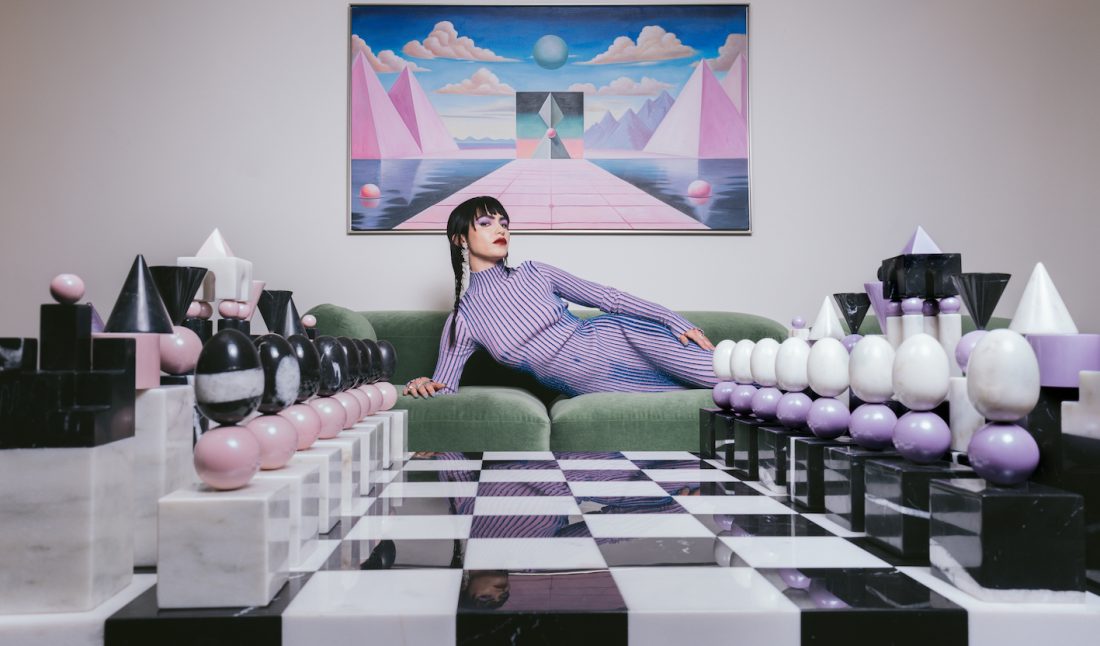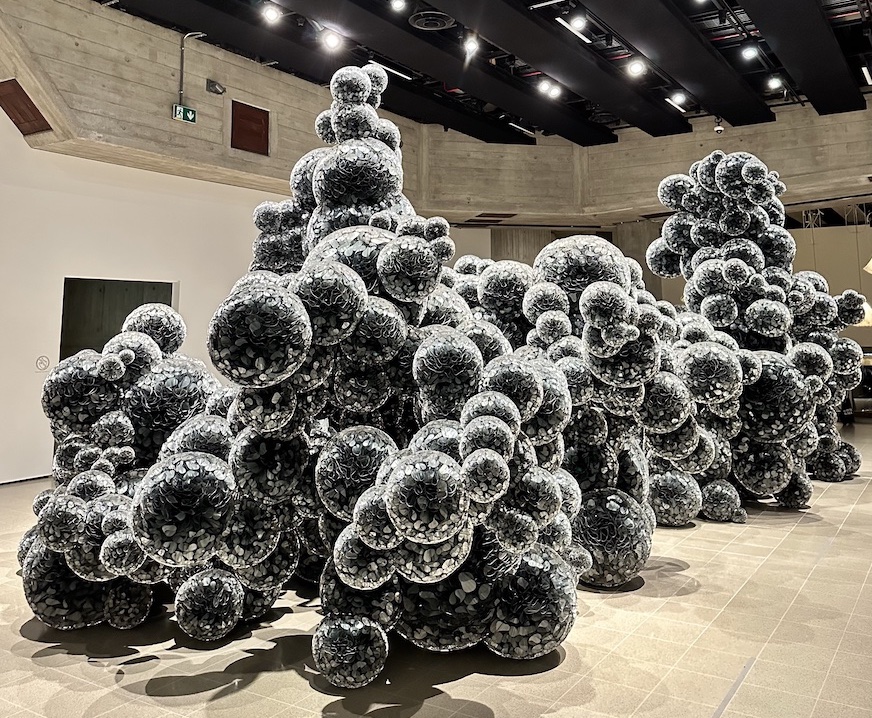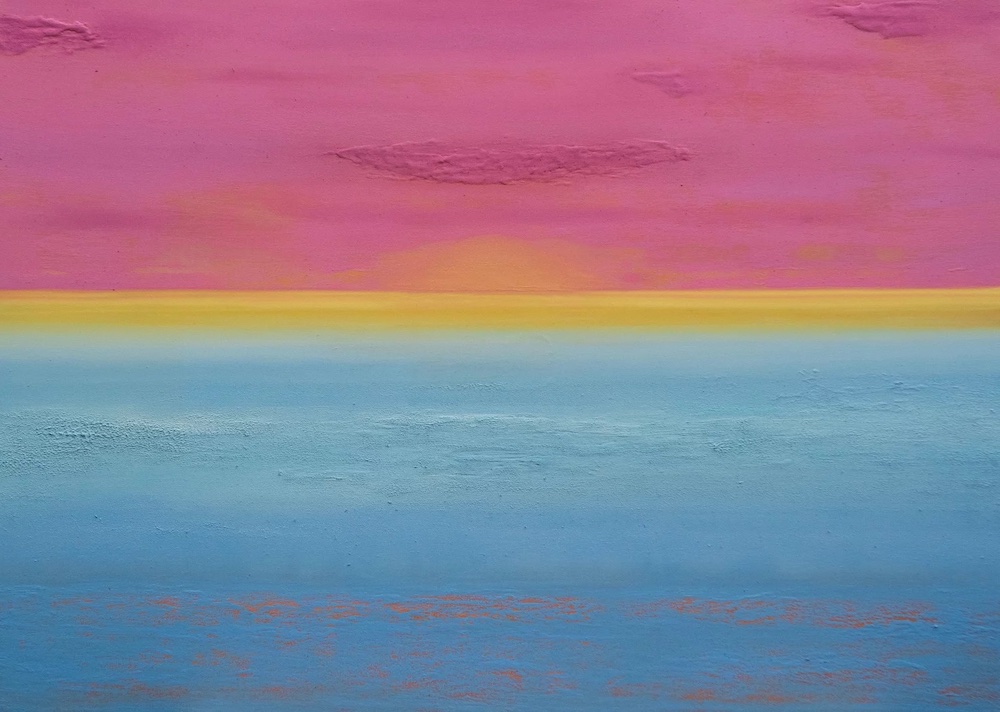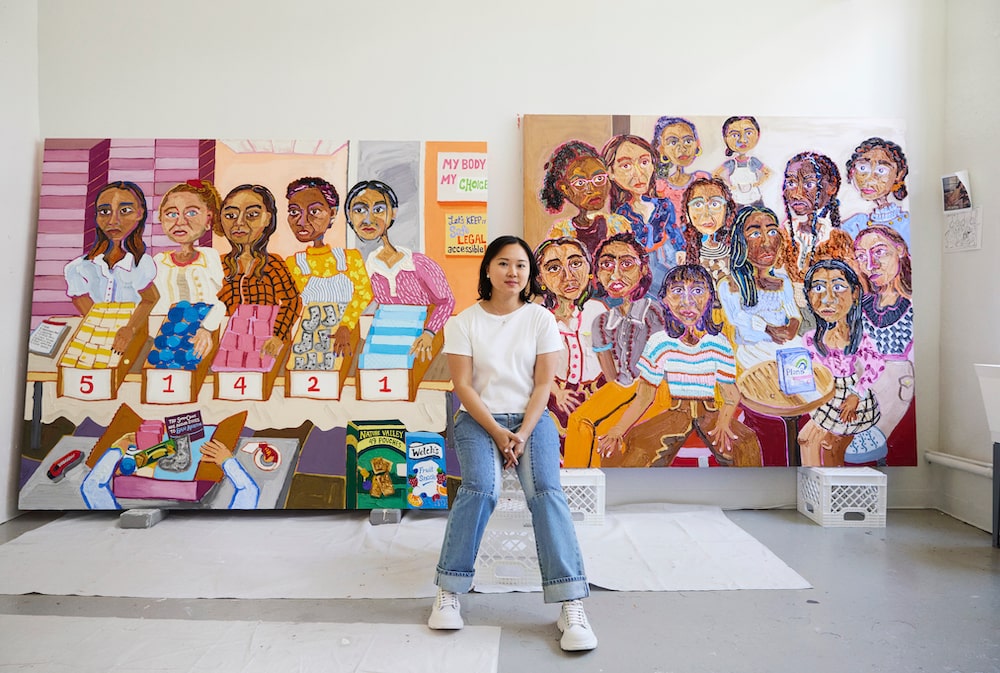“When I met Pilar Zeta about a year ago here in Mexico City, I immediately recognized her vision,” Gaïa Jacquet-Matisse recently shared with Whitewall. “Her style was a perfect reflection of her art, right down to her checkered print shoes.”
It was then that Jacquet-Matisse delved deeper into the Argentinian artist’s world and the multifaceted work she created, impressed first by her large-scale installations. “They first captured my attention, but it was the diverse aspects of her work—from artistic direction and sculptures to her music—that truly set her apart,” Jacquet-Matisse elaborated.
This synergy recently sparked an exhibition named “Temple of Self” in Mexico City, on view at Zeta’s own home. Curated by Jacquet-Matisse, the exhibition explores how the home can transcend the mundane, featuring an interplay between Zeta’s traditional artworks and aspects of her daily life. Tables, beds, and chess boards are interwoven with sculptures, tapestries, and paintings.
Whitewall spoke with both Jacquet-Matisse and Zeta about “Temple of Self” and how by making creative universes for people to explore, they’re connecting with the masses.
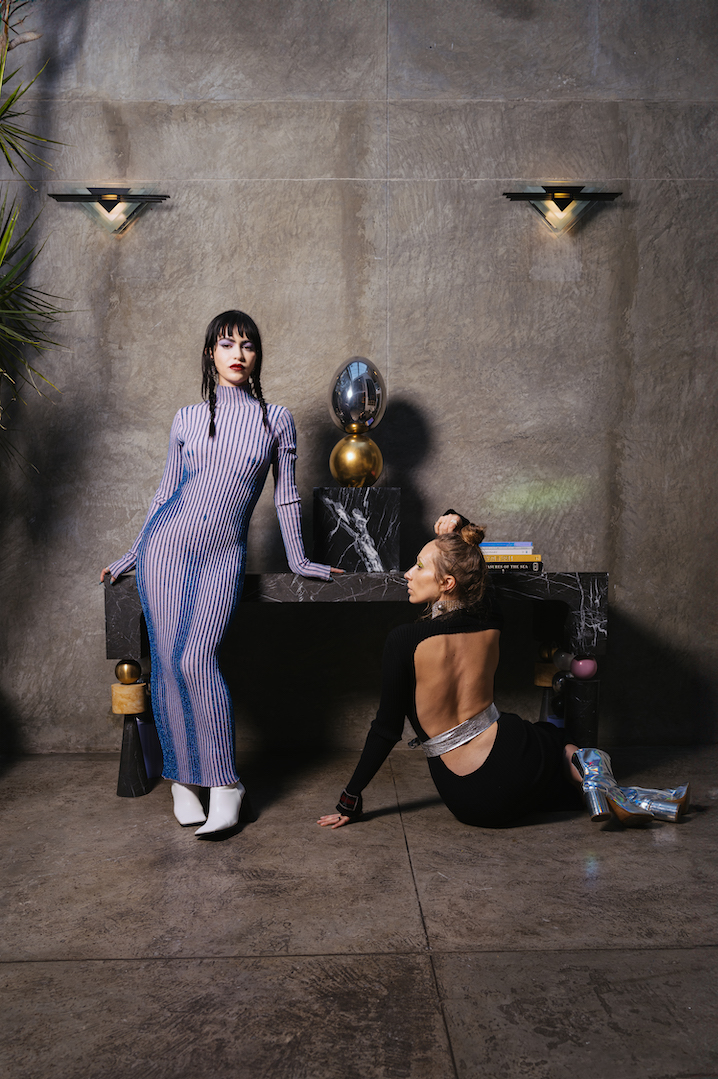 Courtesy of Pilar Zeta.
Courtesy of Pilar Zeta.
Home as a Sacred Sanctuary
WHITEWALL: Gaïa, you mentioned first being drawn to Pilar’s work because it was a reflection of her. How so?
GAÏA JACQUET-MATISSE: It’s rare to find an artist these days who integrates their art so completely into everything around them. I am also very fascinated by how she uses AI as a tool to create, then collaborates with artisans to materialize her visions in the physical world. This shows how we can synergize with artificial intelligence in a meaningful way while preserving the essential human touch.
WW: “Temple of Self” was curated to not be a showcase, but a domestic environment transformed into a sacred sanctuary. Why was this curatorial framing important?
GJM: Pilar’s evolution as an artist and her exploration of various mediums over the past two years have naturally transformed her apartment into a sanctuary. In curating the exhibition, it was important to find a medium between presenting her work, while giving each piece the proper importance and space, while also maintaining the essence of her living space. Much of Pilar’s inspiration stems from the books and objects she’s gathered on her travels over the years. I really wanted to emphasize these personal treasures, integrating them alongside her art so that visitors could gain a deeper understanding of Pilar and the inspirations behind her work, not just the final outcome.
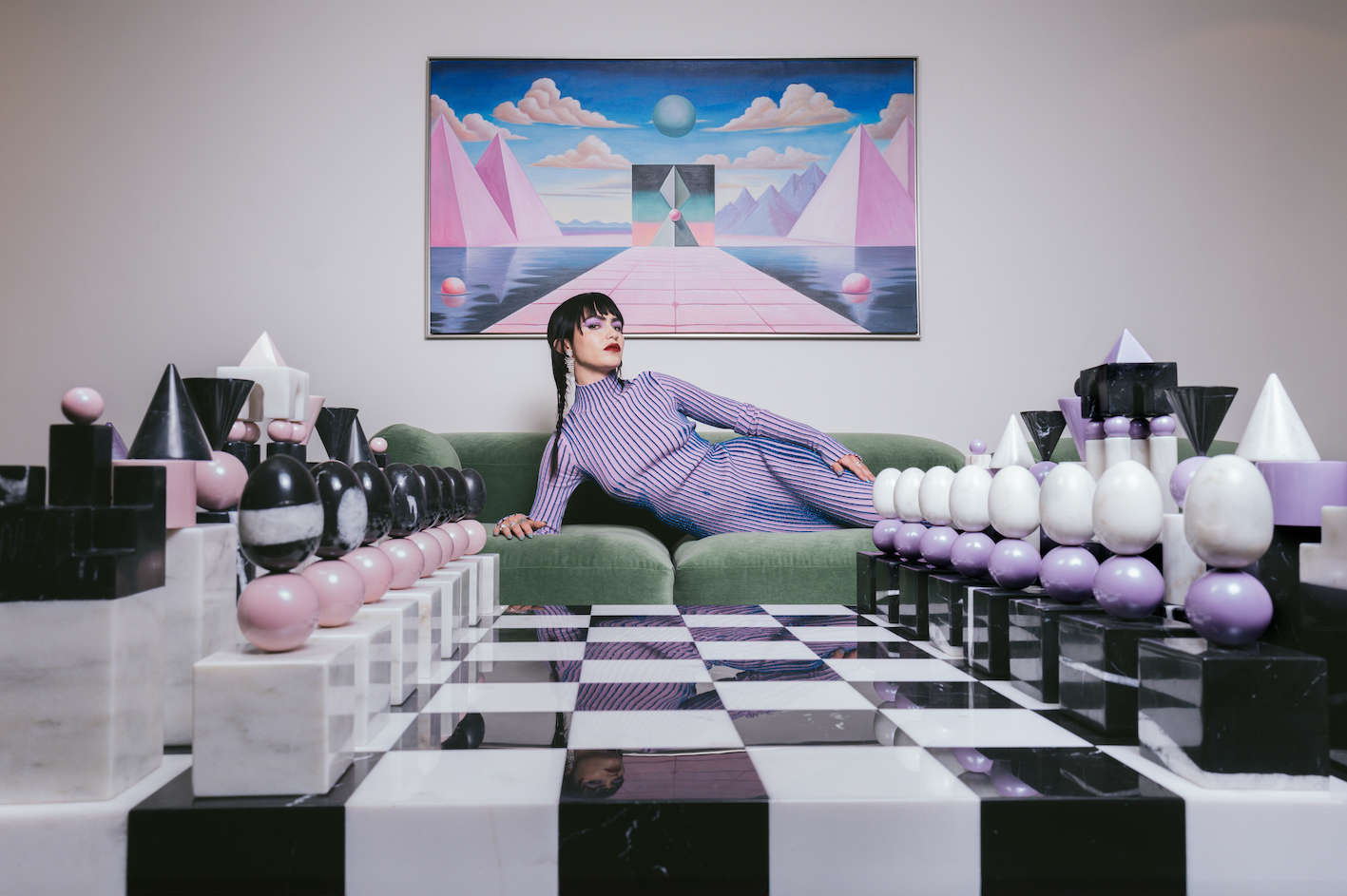 Courtesy of Pilar Zeta.
Courtesy of Pilar Zeta.
WW: The show invites contemplation between the interplay of life and art. How did you experience that?
GJM: Working on “Temple of Self” really reminded me of the symbiosis between life and art. Pilar lives her art: it’s the essence of her being and in every corner of her space. When one possesses a distinct vision or style, it invariably manifests in the choices we make, from the objects we surround ourselves with to the manner in which we conduct our lives… Pilar just reminds us that art transcends creation, it is a way of life.
WW: Pilar, “Temple of Self” was grounded in the philosophy that home is not just a space, but a testimony to the intertwining of life and art. Why was this your starting point for the exhibition?
PILAR ZETA: I wanted to show the world how I live my life and express myself as an artist in my day-to-day habits, not just by surrounding myself with the art and furniture I create and design, but also by giving each displayed object its own unique story. I have a crazy collection of rare occult and metaphysical books, alongside design books I’ve been collecting all my life. Being surrounded by the things that inspire me every day keeps my creativity flowing. Living my life as an art form means my environment needs to be aligned and reflected with my inner world.
So, I wanted to invite people to see where it all comes from, showcasing not just my art and furniture, but also the weird objects, tech gadgets, and my collection of pyramids. My art covers a lot of random, crazy, weird subjects that I like and help me express myself.
Almost two years ago, I moved to Mexico with a dream of living in a home that felt like my art, and I finally feel like I’ve reached that point. I hope to inspire others to embrace their creativity and design their own unique, eclectic spaces that reflect their passions and personalities. I feel like my home is my temple, where I can create my dreams, feel inspired, break patterns, and grow as a human.
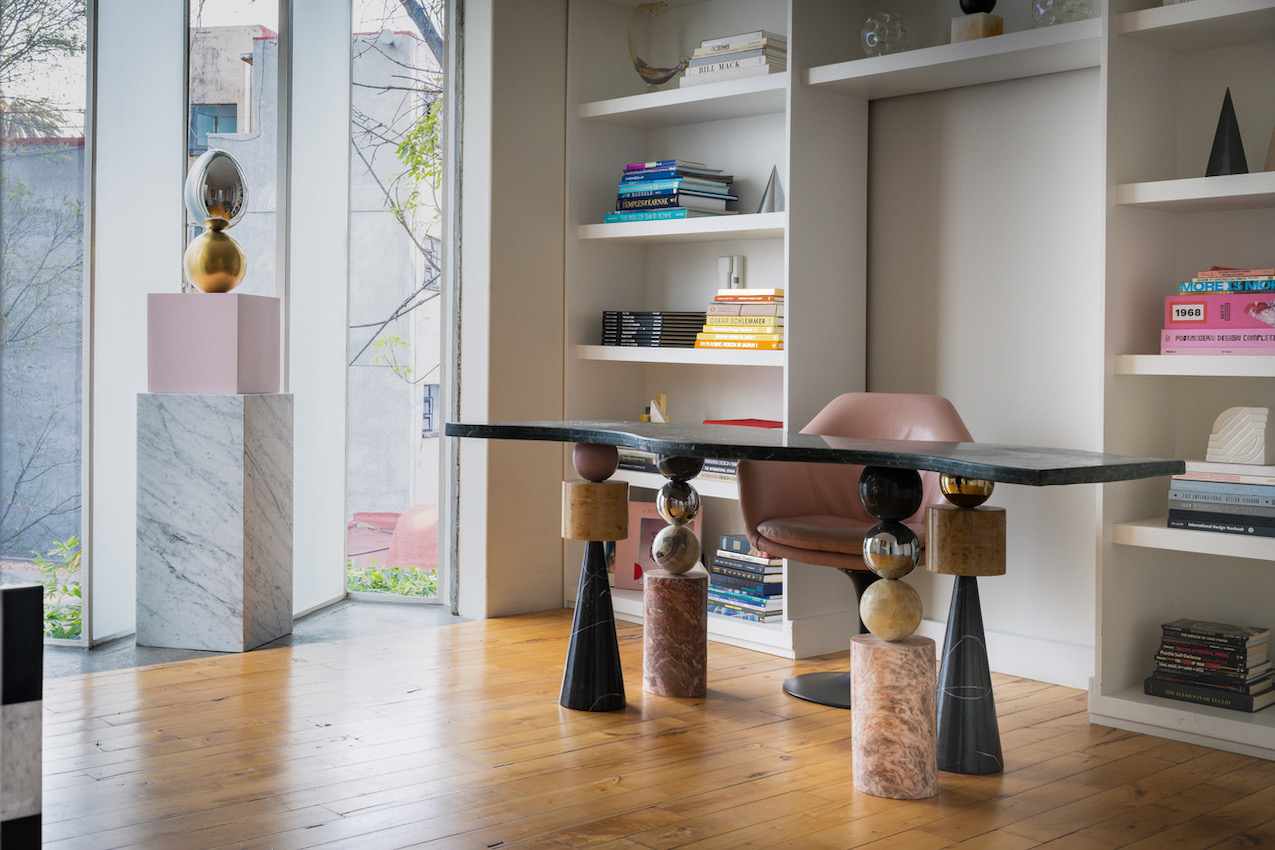 Courtesy of Pilar Zeta.
Courtesy of Pilar Zeta.
Traditional Artwork With Functional Elements
WW: How do the works on view weave together the narratives of your daily life and artistic expression?
PZ: There are a lot of pieces, each designed with a specific meaning behind them. For example, I have a desk made from an entire block of marble shaped like portals, meant to inspire me while I work. Portals, for me, symbolize bringing something from a different realm. Then there’s the crazy chess coffee table; I love playing chess, so I wanted to create my own version. I also have numerous egg sculptures, as eggs symbolize creation for me. Much of my work plays with subconscious symbols.
Additionally, among the tapestries, there’s a rug that I designed as a temple for my cat. Interestingly, I crafted this design ten years ago, and just recently, I found a cat that looks exactly like the artwork. Collaborating with artisans, I bring my imaginative pieces to life. There’s also a hyperrealistic gobelino that took six months to create, based on a digital piece. This intricate tapestry adds another layer to the space, merging the digital realm with the tangible world. There are also some oil paintings that are digital and AI temples and altars. I enjoy the concept of bringing the digital realm into the physical world, working with different artisans to make the pieces tangible while retaining a human touch.
In my bedroom, there’s a bed shaped like a mushroom and colored in soft skin tones. I read in a Feng Shui book that when you wake up, you should feel like you’re emerging from your mother’s womb, hence why my bedroom is all soft pink. I designed the bed with the intention of inducing lucid psychedelic dreams.
I also like to work with stones and mix them with different textures like metal car paint. All of these elements contribute to a more organic feel; some people who enter my house describe it as futuristic yet incredibly cozy, like stepping into a different dimension.
WW: In the show, we see some of your traditional artworks juxtaposed with furniture and functional art, like tables, beds, boardgames, and tapestries. How does this setup challenge conventional paradigms and foster compilation?
PZ: I think it’s more about storytelling and illustrating the connection between my art and my everyday life. Each piece of artwork carries a deeper meaning, which is why I surround myself with it. This show aims to present me as an artist in various forms and to showcase how I navigate my life.
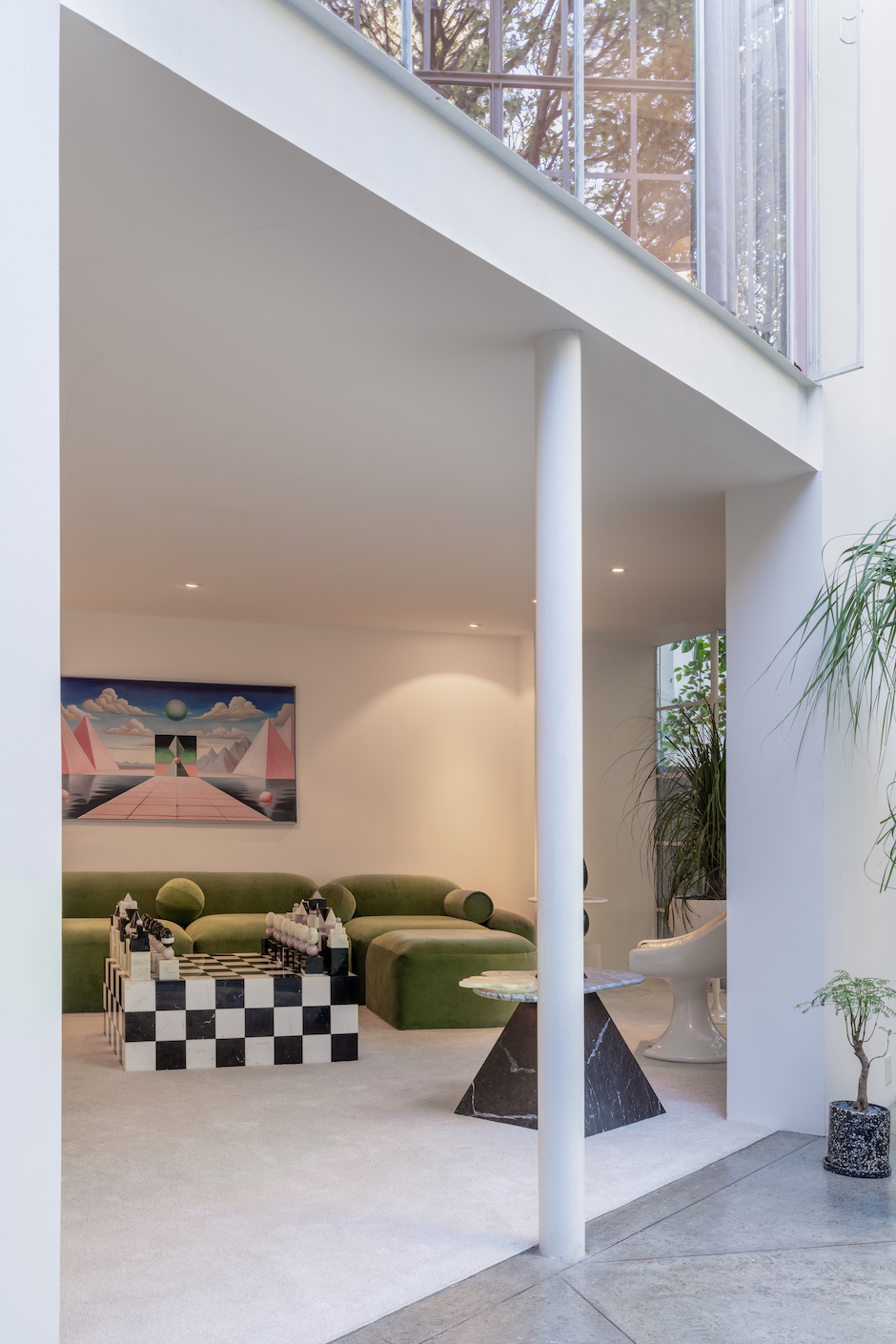 Courtesy of Pilar Zeta.
Courtesy of Pilar Zeta.
Creating Beyond the Canvas
WW: You’re based in Mexico City. What was this year’s CDMX art week like for you?
PZ: This year was a bit challenging to connect and go see a lot of art because I had to put this show together, but I loved having so many people from everywhere, including Mexico, coming to my show and connecting. I went to see a couple of shows and exhibitions; I think Mexico City is at its highest point right now and has an amazing art community. I’m happy to say I feel like I’m in the right place at the right time.
WW: This exhibition speaks to your work beyond the canvas, creating environments and experiences for people to enjoy—like music sets and video direction for Coldplay, Lil Nas X, Katy Perry, and more. Of what importance is experience in today’s evolving creative landscape?
PZ: I feel like in today’s world, artists need to express themselves in every form without restrictions and without worrying about what others might think. It’s super important to follow what excites us the most and simply follow that feeling, continuously creating. Personally, I love delving into various forms of expression, whether it’s creating sets, music, or furniture. That’s why when people enter my house, they often say it feels like stepping onto a movie set, I even have my own music that I produced. For me, it’s not just about creating specific things; it’s about crafting entire worlds and universes through my art. This emphasis on experience allows me to transcend traditional boundaries and connect with audiences on a deeper level.
WW: What are you working on now/next?
PZ: I’ll be unveiling a few large-scale installations around the world that I’m super excited about and will reveal soon. This year seems to be a very promising one, and I can’t wait to share my work with everyone.
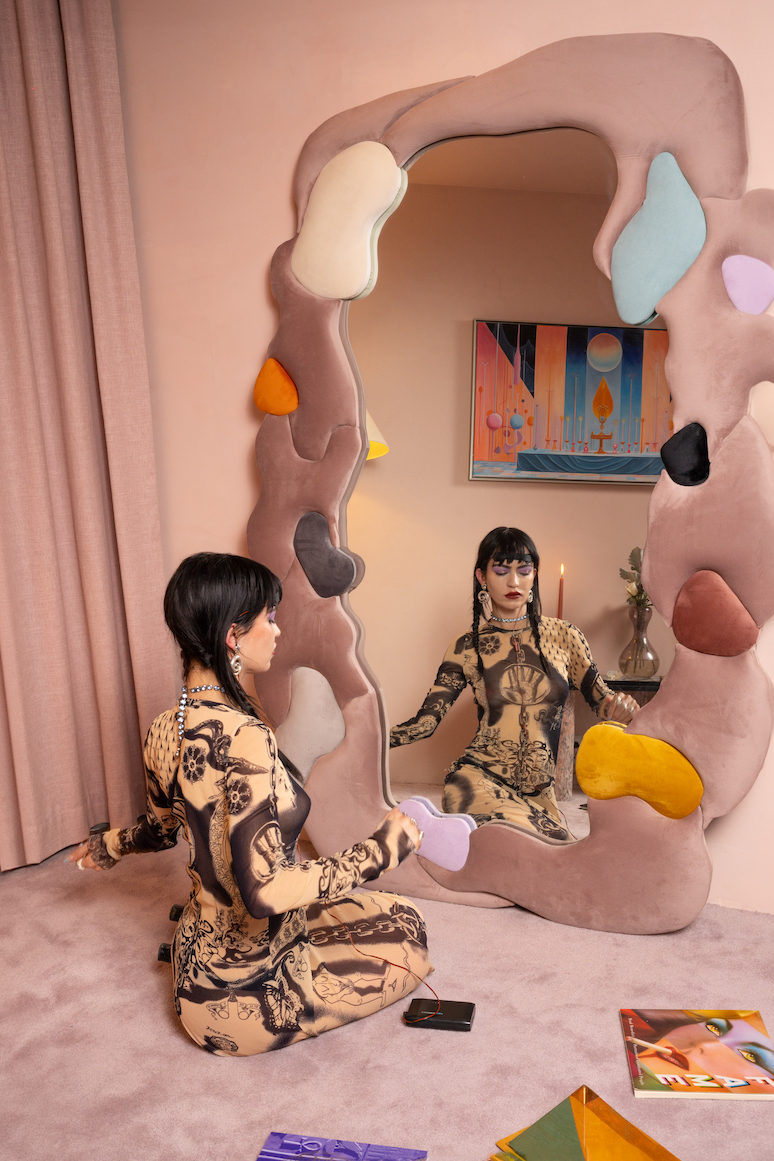 Courtesy of Pilar Zeta.
Courtesy of Pilar Zeta.






